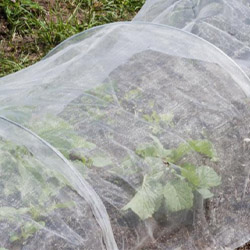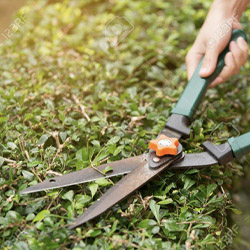Winter Protection
When there is a freeze coming or especially a hard freeze where temperatures will be below freezing for 3 or more hours, your tender plants will need care. First, on the day of an expected freeze, water your plants well as wet soil absorbs more heat during the day that will help radiate heat at night. However, running water on plants during a freeze is not advisable unless you know exactly what you are doing. Purchase frost blanket (available at various locations) or use old sheets or towels to cover your plants. Plastic covers are not recommended as they do not breathe. If they are in containers, bring them in a protected area for the night. If you are unable to move container plants due to weight or size, try to cluster a few together and cover them to help with trapping more heat. Putting lights under the blankets will provide extra heat if needed as well.

Remember, when you are covering a plant, try to cover all the way to the ground- especially sensitive palms as just covering the trunk or roots will not help. Covering plants will not prevent frost damage to foliage as they fabric sitting on leaves will cause moisture to aspirate from leaves and cause them to turn brown and black. However, covering is trying to protect the roots so the plants will recover quicker when things warm up.
The day after a freeze, remove all covers unless the temperatures are expected to remain low during the day and freeze again the following night. When you remove the covers, water your plants again as freezes will remove moisture from the soil. Keep in mind that frost damage on leaves does not usually appear for a day or two after a freeze. Sometimes, it takes longer than that- in the case of trees that have had moisture trapped in their trunks that froze and then they may split.
As difficult as it may to do, resist the temptation to run out and trim off the frozen sections of plants. This will only expose more of the plant to freeze damage from future freezes. Ideally wait until the threat of frost and freezes have passed and there is visible new growth happening. Sometimes plants can freeze all the way to the roots. When this happens, be patient because until you have consistently warm days and nights, the plant will not start to recover, and this might take to April or more.
Some examples of commonly found plants that will require frost protection are Crotons, Heliconia, Ixora, very young Bird of Paradise, very tropical palms like Foxtail Palms and Adonidia (Christmas Palms). There are many others, which is why knowing your plants is important.
Thankfully, in recent years, we have not had many hard freezes but that does not mean it will not happen! Be prepared and know your plants and which ones will require special care.
Reference: https://sfyl.ifas.ufl.edu/lawn-and-garden/winter-plant-protection/
Pruning
Pruning of non-spring flowering trees may be done now- such as oak trees. Most cold hardy trees and shrubs may be trimmed at any time but trees do better when they are trimmed while they are dormant. Flowering trees and deciduous fruit should not be pruned until the threat of the worst freezing has passed (mid to end of February). Prune after cold has passed but before spring flowers.

As contra intuitive as it may sound, you need to trim plants to keep density. If you have plants as a screen for example, you should not let them just grow, grow without trimming. Light trimming the tips of all the branches (not JUST the top!) will create a “flush” of new growth which is where you create density. If you need clarification on this, either email verdego.landscape@verdego.com , call our office or stop by and we will be happy to explain it further.
Pesticide information
A pesticide is any chemical (natural, organic or synthetic) that is used to prevent, kill or suppress pests. It is a broad term that also includes herbicides (weed control), fungicide (disease control) and miticides (mites’ control). Before using any pesticide, always identify the type of problem you have and decide if you can solve the problem non-chemically- for example for black spot fungus consider reducing the amount of irrigation. If you are not sure what is going on- seek help from a reliable source. Once it is decided that a pesticide is what is required then reading the labels and following directions is important. Generally, pesticides are mixed as a ratio of fluid ounces of concentrate per gallon of water. Never use a higher dose than directed. Apply only as directed and NEVER during the hottest part of the day. Always dispose of pesticides at the hazardous waste locations and never dump excess or unwanted down drains, ditches or in the trash. Completely empty containers can safely be disposed of in the trash.
Remain vigilant during the winter for pests. Just because it is January does not mean pests will be dormant like some plants. As always, if you have an issue you can’t identify, you can drop by the office with a sample or call and have some pictures emailed to us to assist you.
Fungicide should also be used with caution. Many times, from summer rains we see fungus developing on plant material or grass. Fungus does not show up when it is raining, rather much later- often in the fall. Fungicides are mostly preventative in nature and for that reason, plants that you know get fungus yearly should be sprayed earlier in the year. There is a small percentage that is active in fungicides but by spraying earlier in the year- following the product instructions, plants develop a resistance to fungus, and it is more effective. Of course, many fungus problems are related to overwatering. You cannot control the rain; however, you can control your own watering habits- keeping in mind your mature landscape only requires ¾” to 1” of water per week- this includes rain!
Wildlife
January brings some interesting Wildlife to our gardens, area and coastlines:
• Visiting over-wintering ducks, geese, and robins visit our area
• Nesting activity can be seen by osprey, sand hill cranes, hawks and owls
• Deer reach the peak of the rutting season in N. Florida
• Watch for right whales off our coast.